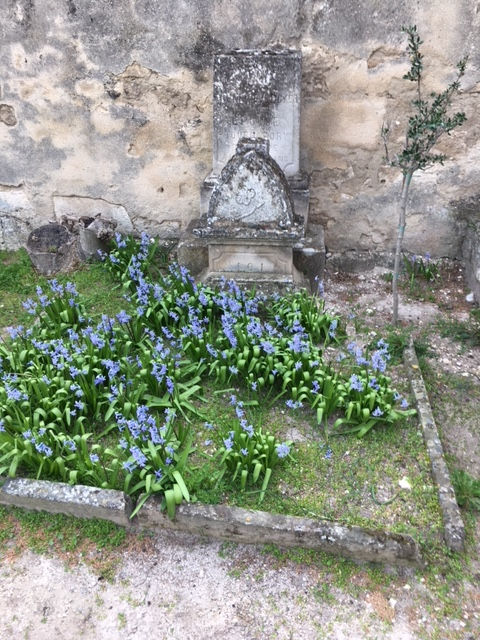Bartlett on Gardening: Blooms Among the Tombs
- Robin Ford Wallace
- May 26, 2018
- 2 min read

Many years ago, we lived on a busy corner where I had a fenced, flower-filled side yard. One morning, a woman paused to tell me that her uncle’s funeral was going to be at noon. She had picked up baby’s breath and red roses for a gravesite bouquet and asked if she could add some of my blue bachelor’s buttons to complete a patriotic theme. I was flattered to be asked. As we gathered the needed flowers, she told me that the family wanted to highlight his service in the army.

Flowers and plants have probably been a part of memorials since the first funeral. The ancient Egyptians and Greeks used daffodils in funeral garlands. The flower was a symbol of death because its scent had lured Persephone to the Underworld. In the Greco-Roman world, the anemone symbolized mourning because it was said to have grown from the tears Venus shed for Adonis.
Roman cemeteries lay outside the city walls. The Romans planted flowers and herbs on the graves in memory of the departed. Tansy was believed to stop decay. Marjoram gave peace to departed spirits. Parsley was also planted because it was sacred to Archemorus, the herald of death.
In much of Asia, white is the color of mourning. White roses, chrysanthemums and lilies are used as memorial flowers. In Japan, yellow chrysanthemums are also appropriate. On November 1, the French decorate graves with potted chrysanthemums. The flower is so closely associated with this custom that they are not used for anything else.

Roses too have a long tradition as memorial flowers. In the 19th century, roses were often depicted on headstones. Those with a broken
stem symbolize a life cut short and are typically found on a child’s grave. In that era, it was common for families to place memorial plants on graves. Often these were roses cherished by the loved one. Today, old cemeteries are prime sources of heirloom roses. Collectors take cuttings from neglected plots to save these living antiques.
These days, carnations rather than rosemary stand for remembrance. Lilies, symbols of restored innocence and sympathy, are commonly associated with funerals. Chrysanthemums, still widely regarded symbols of grief and death, are popular along with roses.
Memorial flowers are a very personal choice. In decorating graves, people often select flowers growing in their gardens or seasonal bouquets from a florist.
For those maintaining a family plot, ongoing maintenance is a consideration. As a child, my mother’s favorite family outing was the annual reunion in the cemetery. The adults cleaned the graves while the kids played and had a picnic. I used to think this get-together seemed creepy. Now I see it as a wonderful way for distant kin to stay in touch.
Master gardener Ann Bartlett took the photo with blue flowers in Les Baux de Provence. The others were taken in Sacramento City Cemetery.




Comments